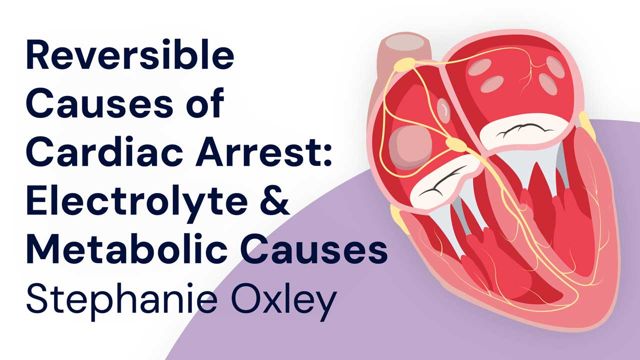Reversible Causes of Cardiac Arrest: Electrolyte and Metabolic Causes


This lecture by cardiac clinical nurse educator Stephanie Oxley focuses on reversible causes of cardiac arrest - specifically, addressing electrolyte and metabolic imbalances such as high/low potassium and calcium, severe hypoglycaemia, and profound metabolic acidosis. Stephanie covers recognition, treatment and post-resuscitation management.
Test Your Knowledge
Question 1 of 5
When managing hyperkalaemia post-ROSC, what is the target range for potassium levels?
Topics
For Teams
Assign to your staff
Assign mandatory training and keep all your records in-one-place.
Find out moreMeet your educator
Content Integrity
Ausmed strives for the highest level of content integrity and accuracy in our educational resources.
Last updated01 Jul 2025
Due for review30 Jul 2028
Disclaimer
Disclosure
Usage
Cite this resource
 New
New